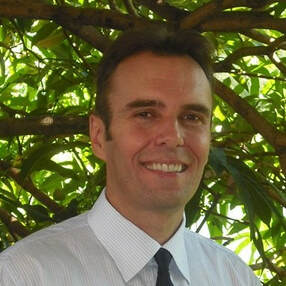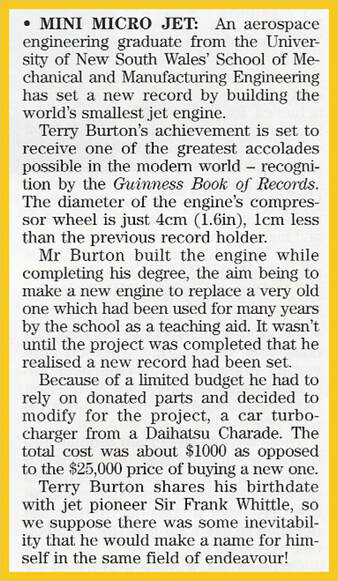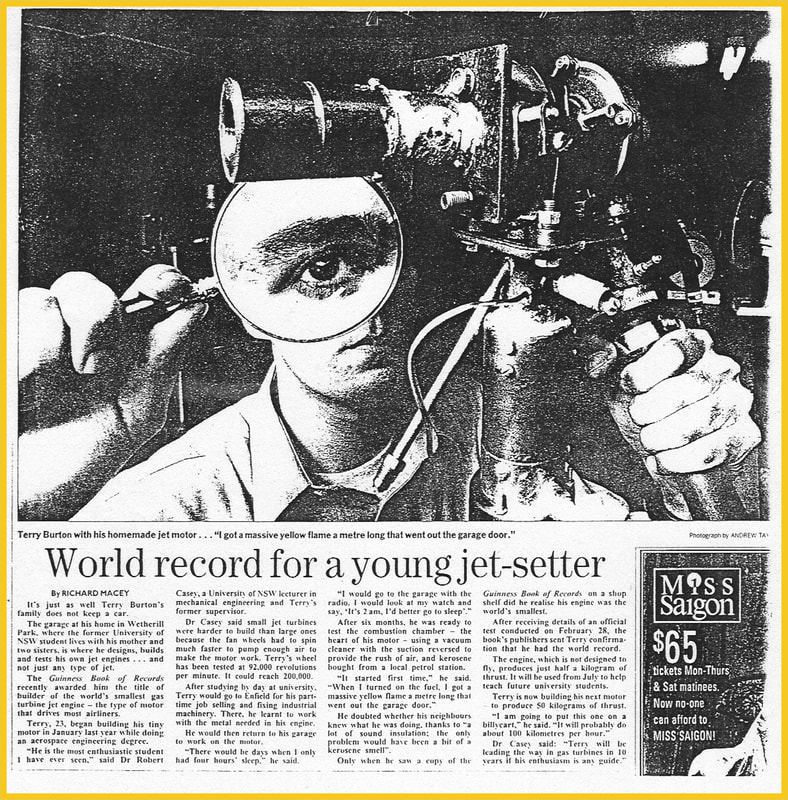Terry Burton.Founder / Director / Aerospace Engineer
Terry has over 25 years of aerospace engineering experience and has a passion for aircraft and jet engine design. He graduated from the University of New South Wales in Australia in 1996 with a Bachelor of Aerospace Engineering. For his thesis he designed and manufactured the world's smallest jet engine for which he was awarded the World Record from the Guinness Book of Records in 1996. Terry worked for Boeing-Hawker de Havilland in Australia from 1996 to 2008 as an aerospace structural engineer. He conducted engineering dispositions for structural repairs on flight control surfaces for the Boeing 737, 747 and 777, the Airbus A330, A340 and A380 and the Lockheed Martin C130. During this time he spent 2 years working for Boeing in the United States of America as a mass properties engineer on the Boeing 737 Wedgetail project. Here he performed configuration trade studies advocating lightweight designs and analysed weight data for mechanical systems. Since 2009 Terry has been working at Terence Jets in Australia to develop the UJ1672A.
Vertical Divider
|
The Dream that Led to the UJ1672A
|
" As a young boy I dreamed of flying like the Japanese rocket powered robot cartoon character, Astro Boy. This started a lifelong interest in aviation and a desire of one day flying a military fighter jet. Throughout high school I spent my free time building and flying model planes, going to the airport, attending airshows and going to the library to read about jet aircraft. Luckily my high school was located under the flight path of the Sydney international airport with the sight and noise of the planes fuelling a sense of wonder.
Towards the end of high school I investigated applying to the Royal Australian Air Force to become a fighter pilot but an eyesight color vision problem prevented this career. My next step was to study aerospace engineering to acquire the knowledge to design my own aircraft. My university thesis gave me valuable experience in developing a small gas turbine engine and my years of working for Boeing-Hawker de Havilland provided valuable aerospace industry experience. With my dream still alive I left work in 2008 to develop the UJ1672A. In hindsight had I become a fighter pilot I would not have had the aeronautical engineering knowledge to design the UJ1672A. My approach is to work on technical projects over a long-time frame in a dedicated and methodical manner. I like to keep fit as this aids my mental health and to ensure I would have the physical capacity to fly the UJ1672A should this venture come to fruition. |
Australian Aviation print magazine, June 1996, pg 8. Reproduced with permission
|
I am longing to hear the jet engines of the UJ1672A come to life, to go through those special “first” events, learn through the difficult times and ultimately to fly the UJ1672A. I dream of making the UJ1672A the pinnacle aircraft used in the global motorsport of air racing at the highest level. I want to share this with people who have a passion for aviation.
I would like the UJ1672A to be known as a well-designed aircraft with an excellent safety record and to be a great technology platform for aviation innovation. As the business expands one of my goals is to help charities and to be a role model for young people aspiring to enter the aviation field."
I would like the UJ1672A to be known as a well-designed aircraft with an excellent safety record and to be a great technology platform for aviation innovation. As the business expands one of my goals is to help charities and to be a role model for young people aspiring to enter the aviation field."
The Sydney Morning Herald newspaper, 26 April 1996, pg 3. Reproduced with permission




